Currently on display at Christopher Cutts Gallery are some of the key paintings of Rae Johnson under the title Angels and Monsters: A Selection of Paintings from 1979 to 2019. Alas, due to the health crisis they are not on public view. Viewings are by appointment only. This is not only an inconvenience but also very regrettable given the importance of the show. Johnson is a veteran of the Toronto art scene, having studied, lived, worked or shown in the city since 1975. She was also a professor at OCAD U for many years, where long ago she was my teacher. In the 1980s she played a central role in promoting and reinvigorating figurative painting as a founding member of the influential collective ChromaZone. But what makes this exhibition especially poignant is the fact that she has been stricken by a serious illness which has ended her ability to make art any more. This show – along with a possible second part later in the year – is, in other words, a retrospective of her long and distinguished career.
Installation view with Death of the Child (left) and Madonna TV (right)
While the paintings date from 1979 – the year prior to her graduation from OCA – to last year, they all belong to either the first six years of her professional career or her output over the last three years or so. Johnson has been a prolific painter whose work has spanned all of these four decades, and many of the works during the intervening period will hopefully be on display as part of a second instalment. What we see here is a selection of works that represent her early career, which was a particularly turbulent time in her life. The later works are included because Johnson feels that they point to a closure. Her work, she believes, ‘has come full circle’ as she puts it. Indeed, there is a detectable kinship between these early and late works.
Installation view with (L-R): Two Women Night, Angels in the Palace and Angel in the Rivoli
Johnson’s first sustained foray into painting was on the theme of pornography. She began producing these works while she was still a student, inspired by her time in New York city as part of OCA’s erstwhile independent study program there. She became preoccupied with pornography because of its violent debasement of women. She attacked the subject with immense energy, producing a great many studies in acrylic in a short period of time. One example is her Empire State that depicts the antagonists as alienated souls in absurd juxtaposition. As with all these works it possesses a disturbing psychological aura. And this psychological dimension soon became the overarching ethos of her work quite generally.
Empire State, 1979, acrylic on paper, 28.5 x 25.5 inches
Around this time Johnson avidly studied the writings of Austrian psychologist Carl Jung. She was particularly impressed by Jung’s notion of the archetype, that is, a fundamental mental image – idea – innately shared by us all. As well, she was very sympathetic with his notion that there is no real distinction between the psychic and the physical – both are aspects of the world we live in. These two notions have guided her approach to image making ever since. A great deal of the time she has aimed to bring out the psychic, to show what lies behind the physical world of appearances.
Angel in the Rivoli, 1983, oil on canvas, 66 x 84 inches
The one archetype Johnson adopted above all has been that of the madonna or the female angel that represents woman as sacred. She contrasted this image with that of the profane world of the everyday. Hence we see the madonna-like figure appear in bars, e.g., in Angel in the Rivoli or at the foot of the lovers’ bed in Anima, Animus. In this latter painting, the male lover is depicted as wrapped in plastic, echoing the theme of the often unspoken violence of sexuality.
Anima, Animus, 1981, oil on canvas, 67 x 97.5 inches
This violent undertone is most notably brought out in a series of works done in 1984, e.g., I Can Hear It Breathing. These are based on a vivid dream she experienced in which she is chased by a dark predatory monster that seems intent on raping her.
I Can Hear it Breathing, 1984, oil on canvas, 32 x 32 inches
What is particularly pronounced in these paintings is her agitated fluid brushwork. She paints with urgency, as if racing to get down the evanescent image before her mind. Here she renounces any concern with verisimilitude or ornamentation. As a result many of her paintings cannot be described as beautiful in the classical sense of being deliberately pleasing to the eye. Rather she has always aimed for an honesty – to show how life feels in all its rawness. What draws the viewer in is the paintings’ psychological energy. And her rendering of the psychical cannot be achieved by strictly copying the physical. At the same time, however, she cannot discard physical appearance. In this sense her work has been a constant struggle to balance these two elements. It is this tension that often makes her work gripping. Hers is a powerful unique voice, wonderfully showcased by Christopher Cutts’ judicious selection.
Night Games at the Paradise, 1984, oil on canvas, 84 x 132 inches
Hugh Alcock
Images are courtesy of Christopher Cutts Gallery
*Exhibition information: Rae Johnson, Angels and Monsters: A Selection of Paintings from 1979 to 2019, March 21 – April, 2020, Christopher Cutts Gallery, 21 Morrow Ave, Toronto. By appointment only. View it online http://www.cuttsgallery.com/

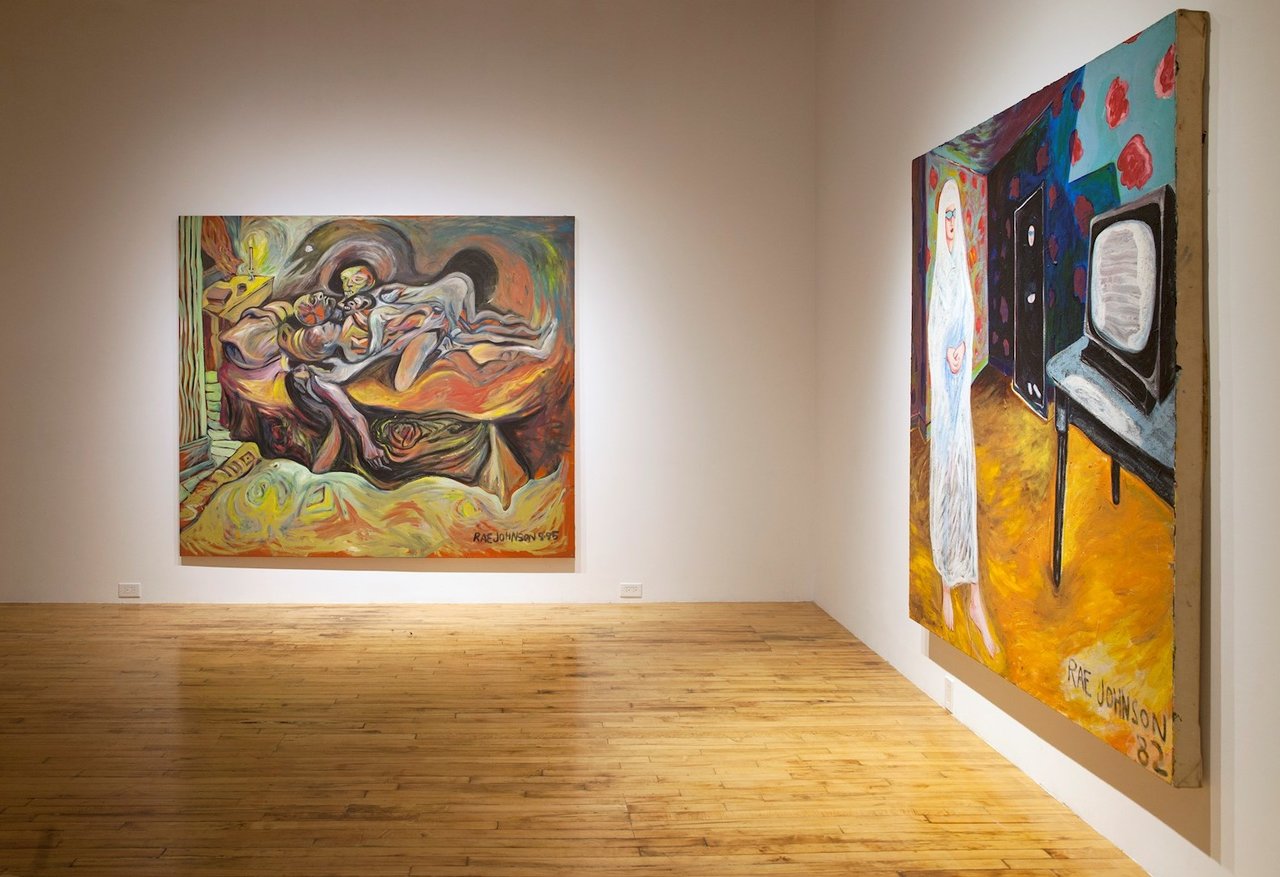
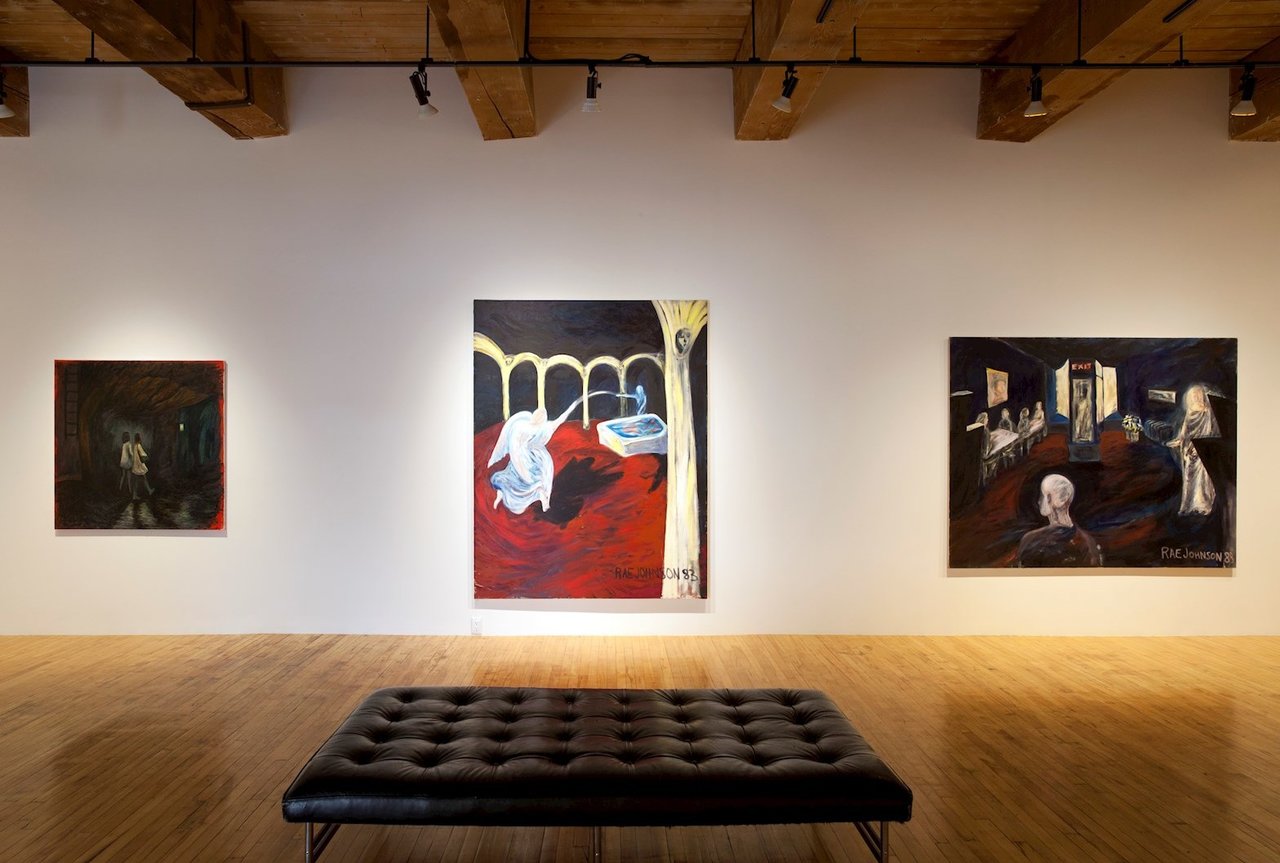
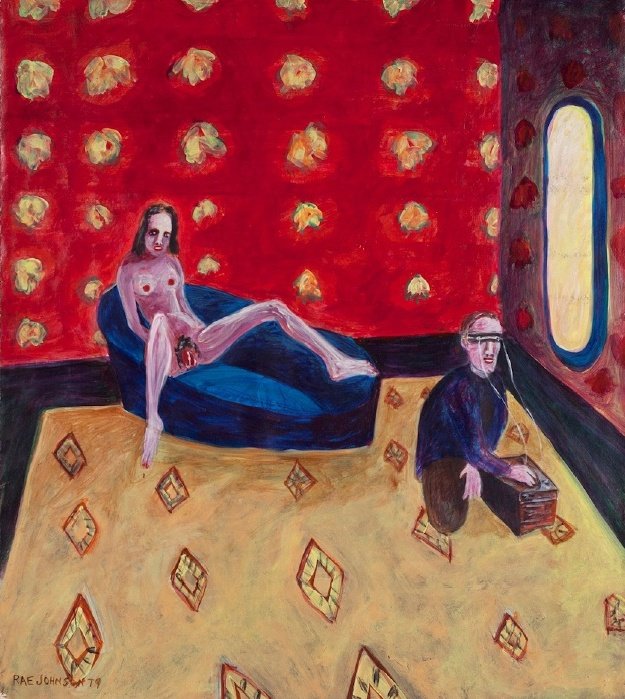
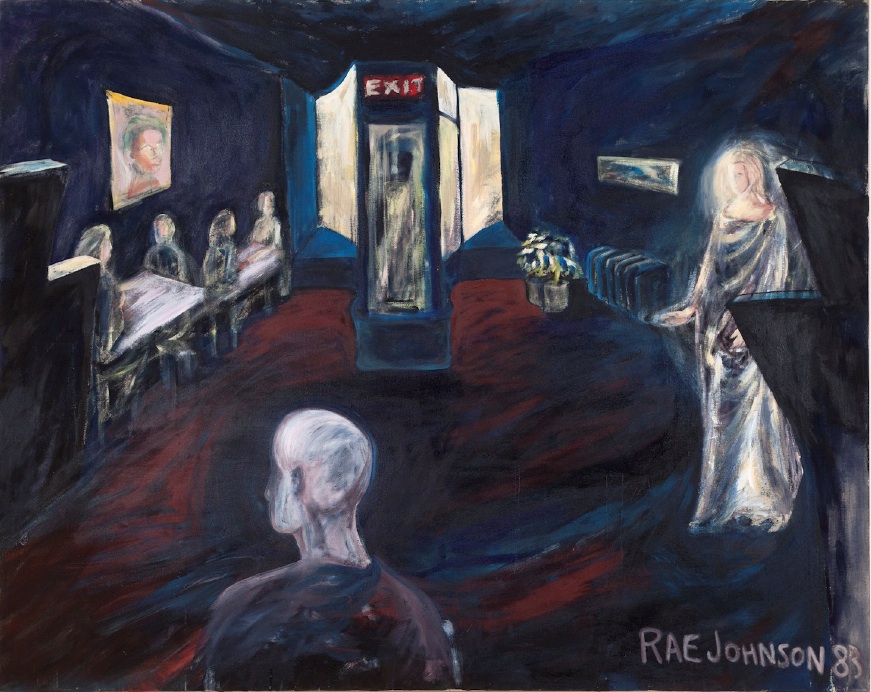
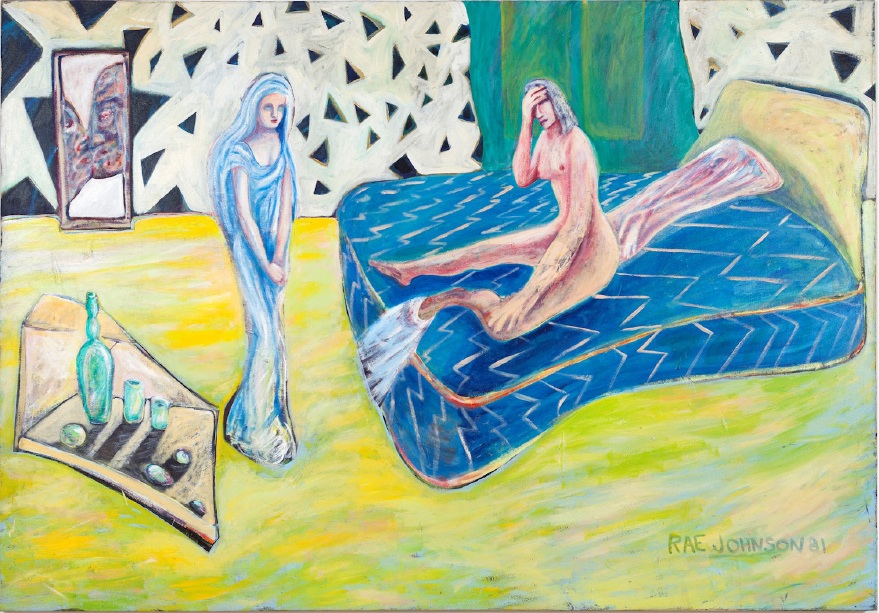
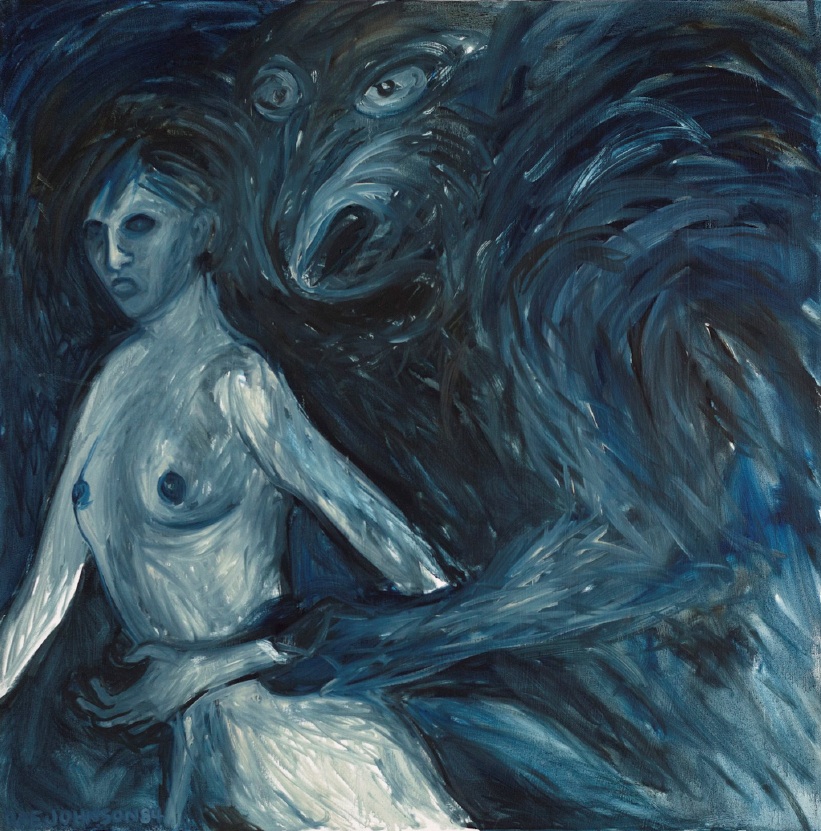
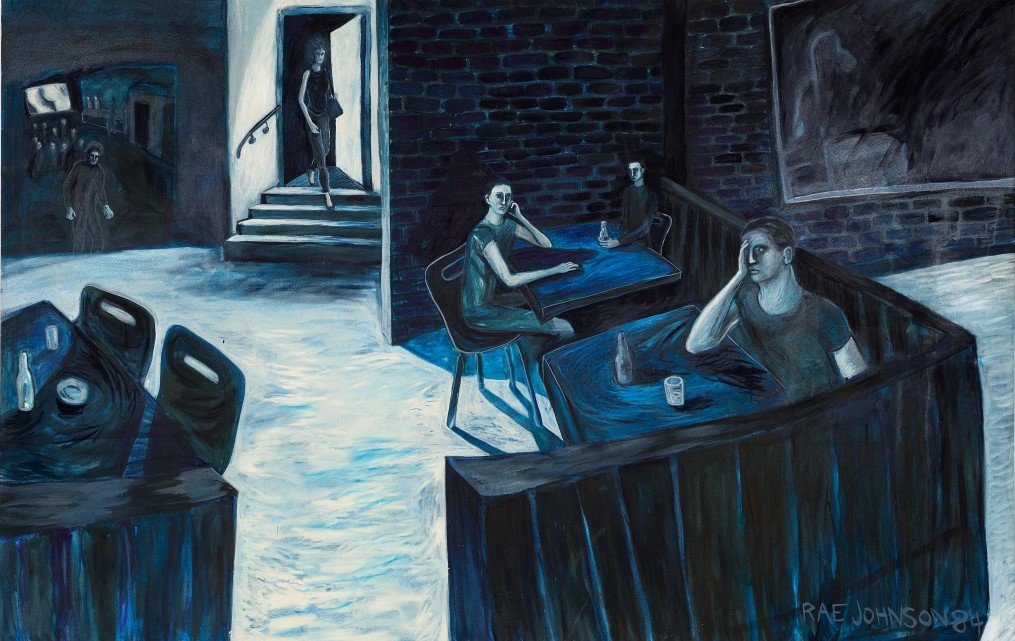
Congratulations Rae !
Yours is an important and significant voice I’m afraid to tackle difficult issues !
Diane Pugen
Brave paintings, which have aged remarkably well. They never hesitate for an instant to address matters of the soul, and this willingness is a key to the works’ redemptive qualities. These subjects are mythic for a good reason; we recognize them in ourselves.